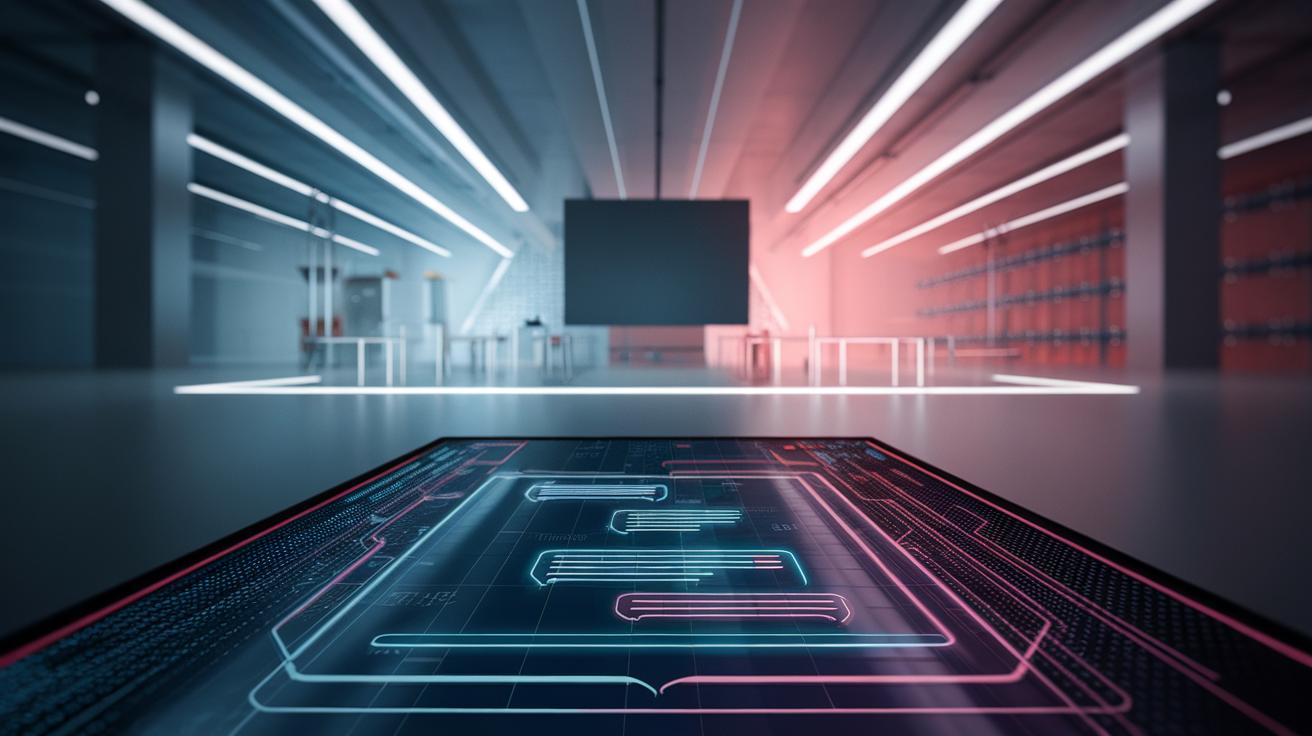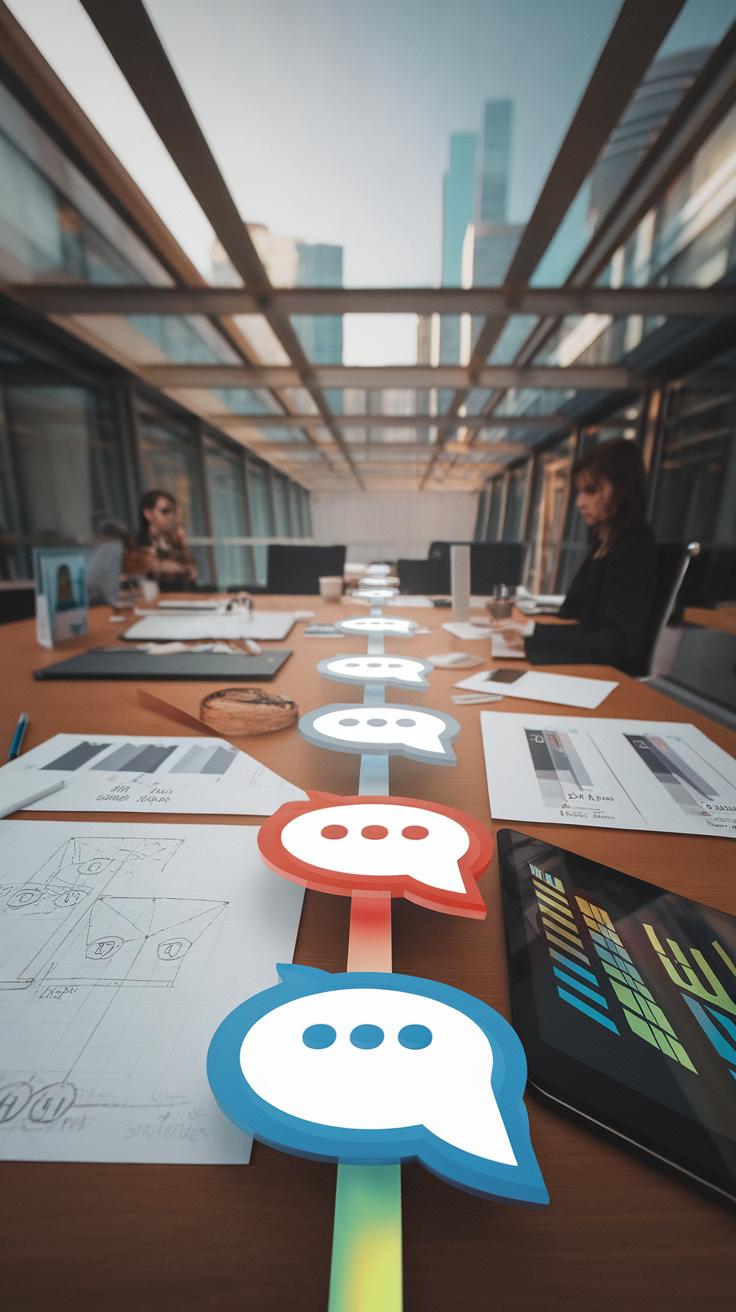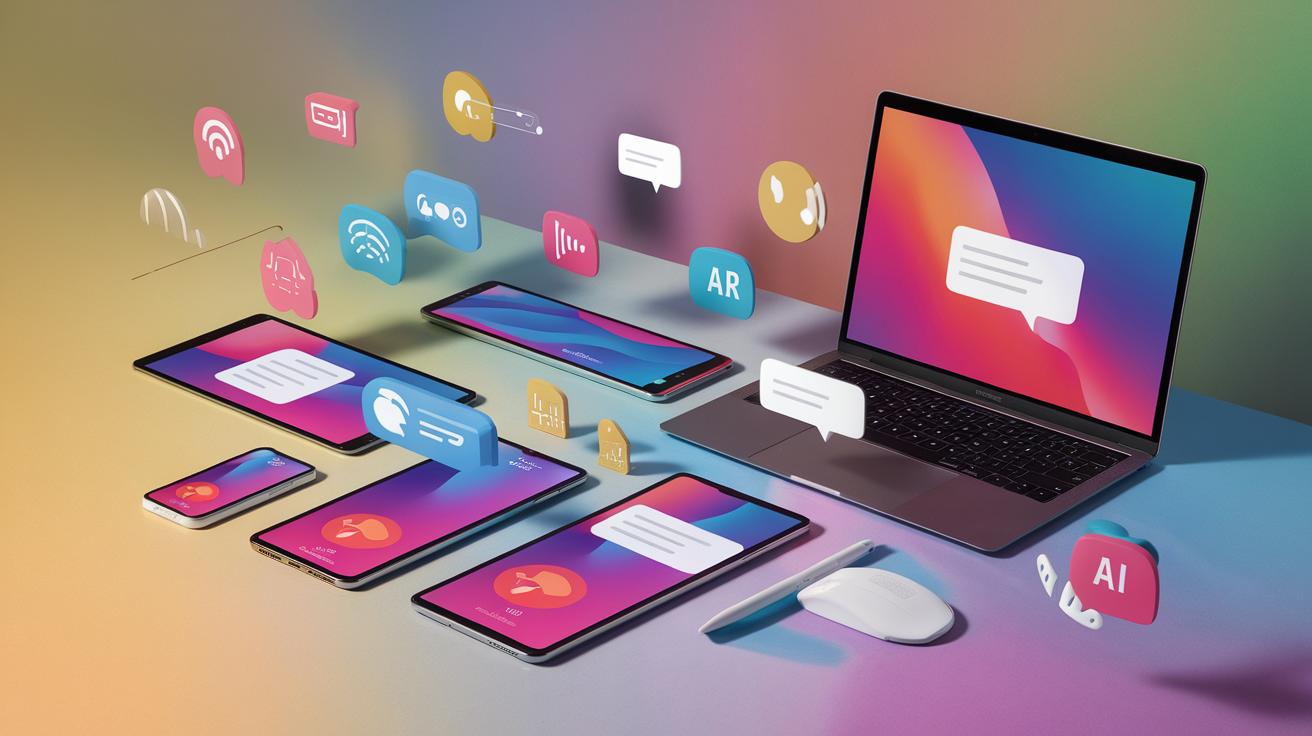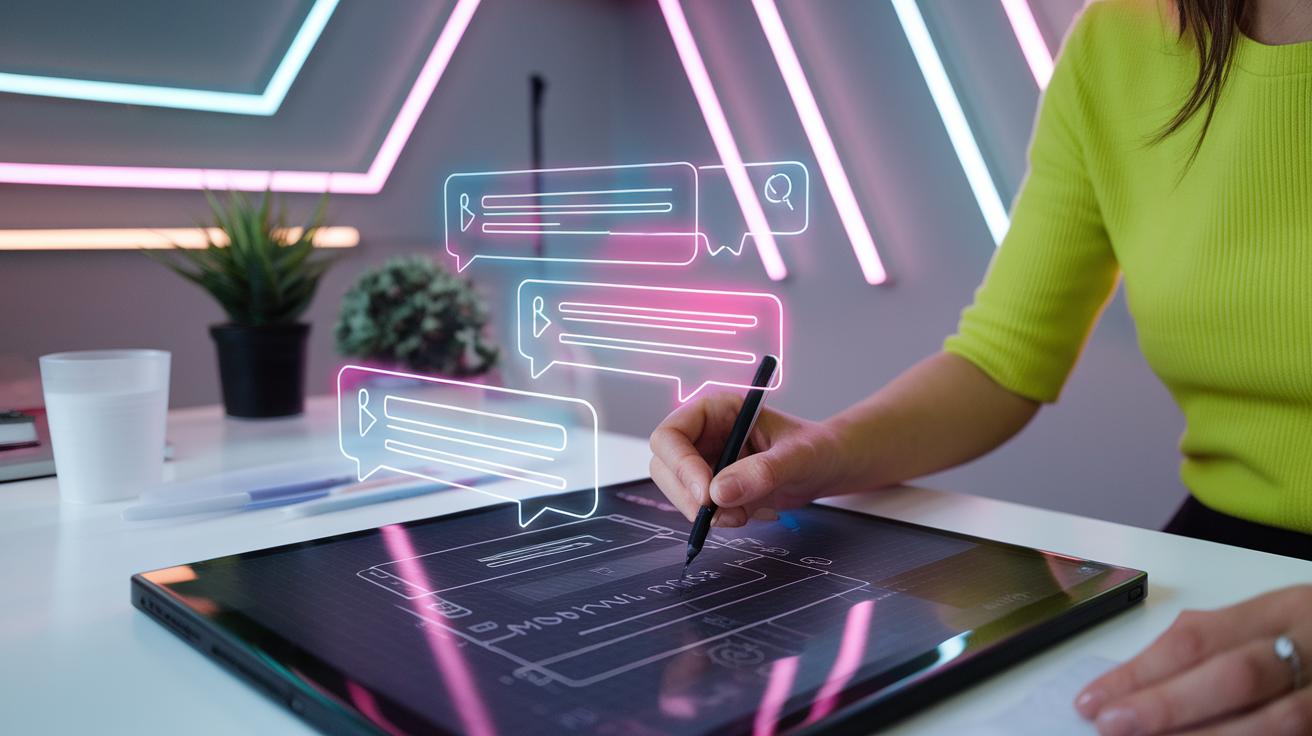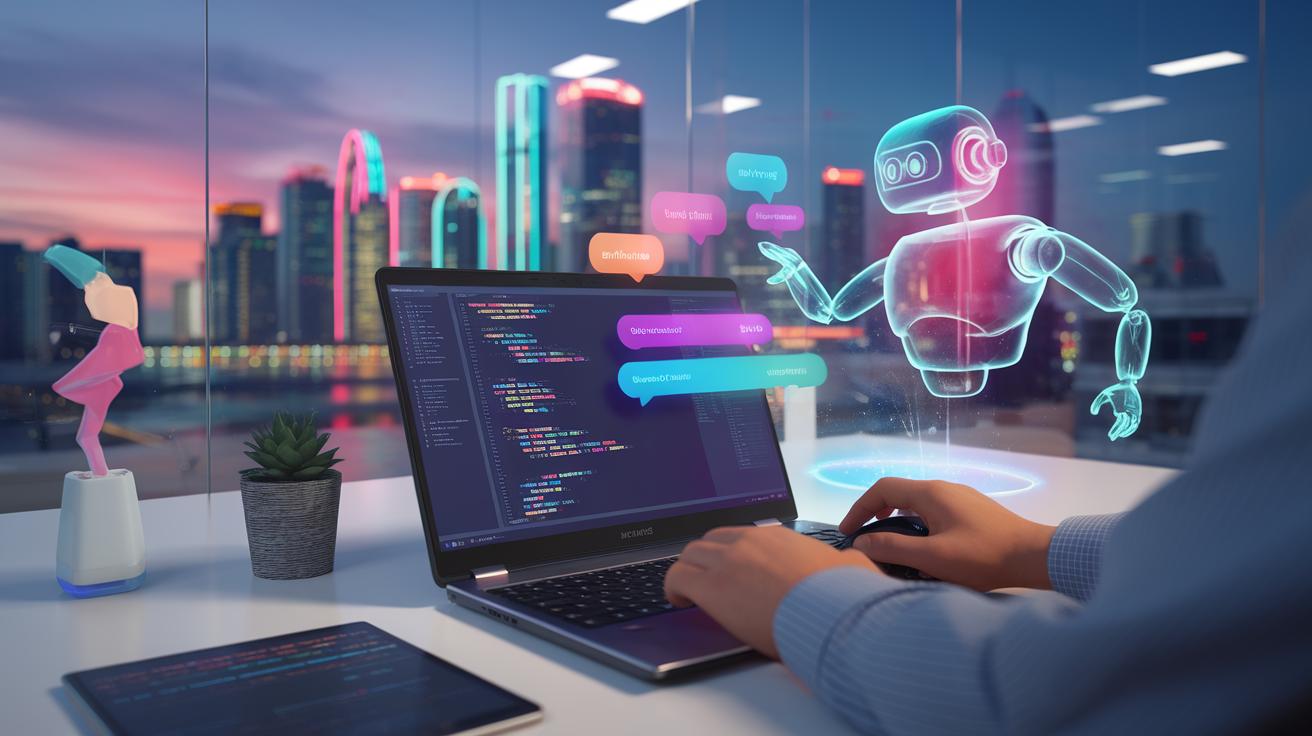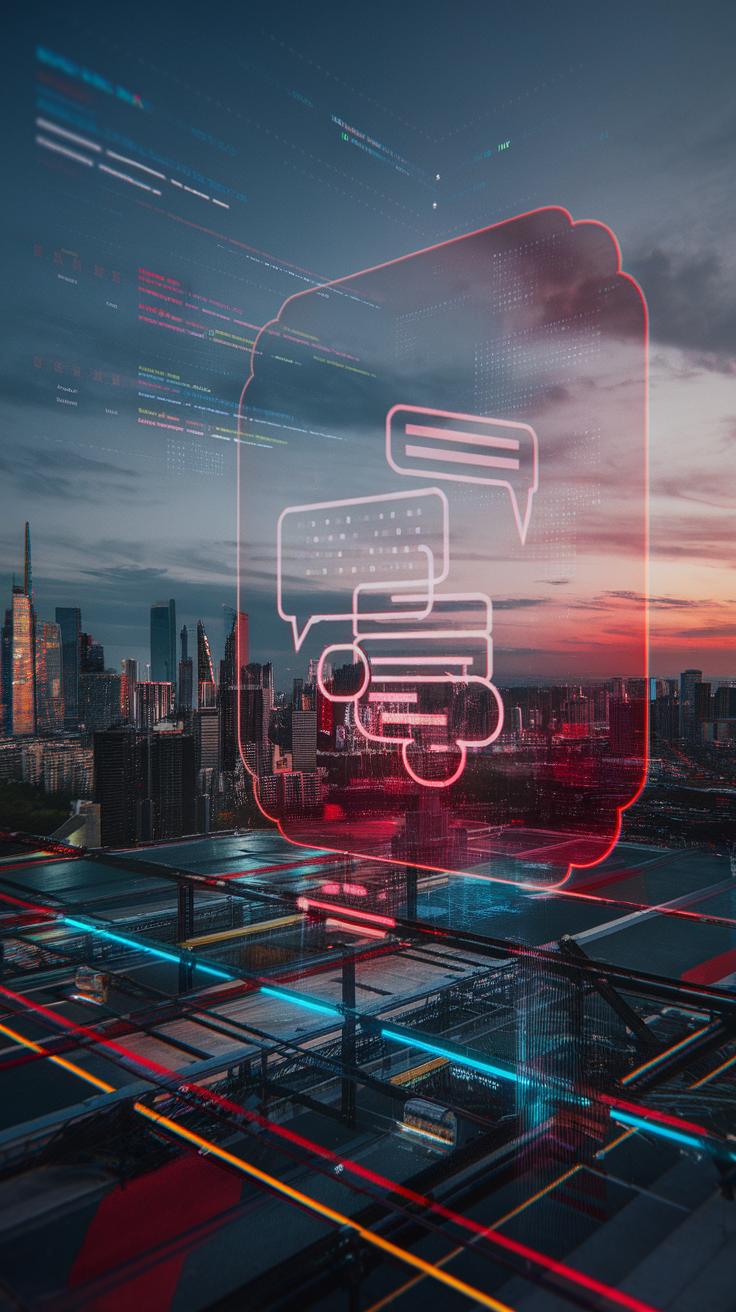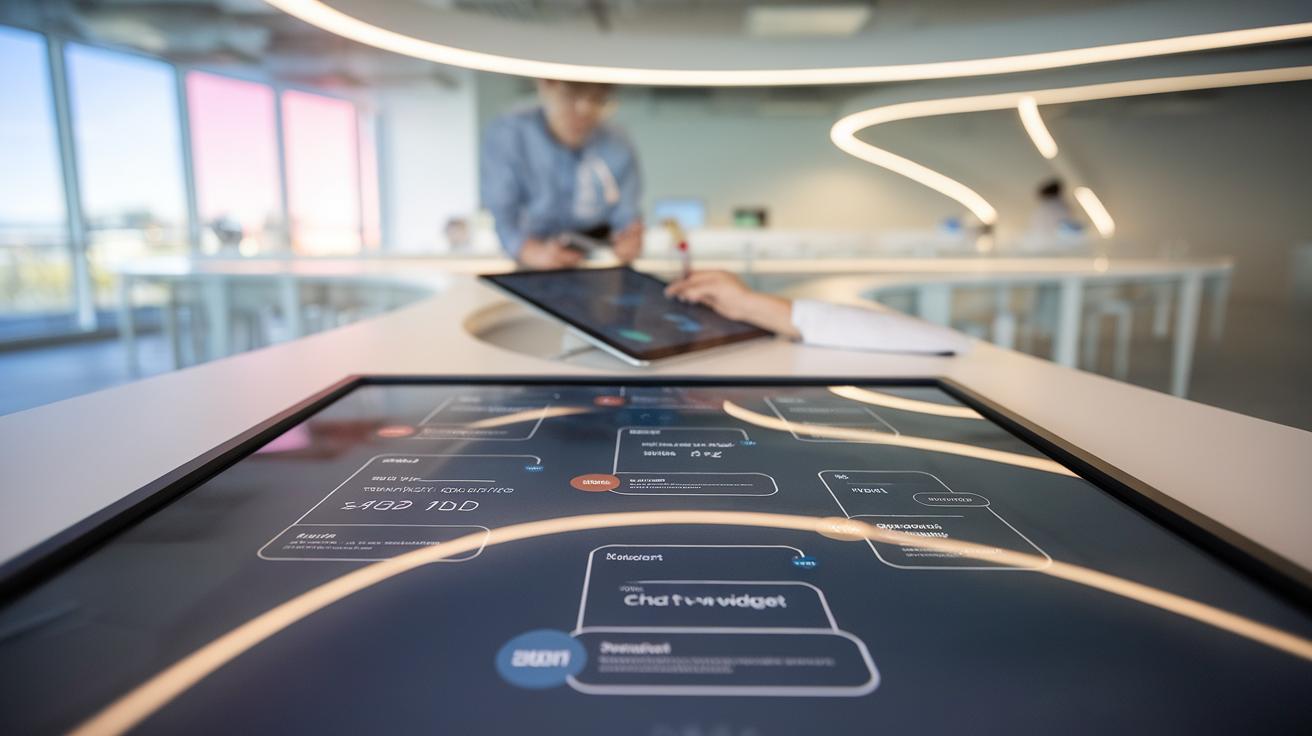Introduction
The evolution of chatbots has marked a significant milestone in how users interact online. As technology advances, chatbot breakthroughs have transformed the simplistic conversational bots of yesteryear into sophisticated tools leveraging deep learning and natural language processing. These AI-powered interfaces are no longer mere customer service aids; they are becoming integral components of web ecosystems, providing personalized interactions that enhance user experiences. With the rise of custom chat widget designs, businesses now have the ability to tailor these interactions to their unique audiences, creating a dialogue that feels both engaging and relevant.
This article shows the clear link between chatbot advances and modern custom chat widgets. We study how these elements interact and reveal a solid, lasting major impact on user engagement and satisfaction. Each section checks all key parts, including the base technology, design choices, and top methods for proper setup. We move through this tough field and give readers clear, practical advice on how to use chatbot advances to boost their online engagement plans.
The Evolution of Chatbots Advancements in Custom Chat Widget Design
From ELIZA to AI-Based Systems
Chatbots have come a long way since their inception in the 1960s, with early prototypes like ELIZA paving the way for what we now recognize as intelligent conversation interfaces. Developed at the MIT Artificial Intelligence Laboratory, ELIZA utilized pattern matching and substitution methodologies to simulate conversation. While it was rudimentary, this early model showcased the potential of computer-driven dialogue and sparked interest in artificial intelligence.
Through the decades, the evolution of chatbot technology has been marked by significant advancements, with each phase contributing to a more sophisticated understanding of human-like interactions. By the 1990s, chatbots like ALICE began integrating more complex natural language processing methodologies, which improved their ability to understand and respond in a more human-like manner. The introduction of the Internet brought an online dimension to chatbots, allowing users to interact with these systems through web interfaces.
The advent of machine learning and deep learning in the early 2000s revolutionized chatbot capabilities. Concerned with enhancing both user experience and the depth of conversation, modern AI-based systems leverage large datasets to learn and adapt to human conversational styles. This shift has led to an environment where chatbots can perform complex tasks such as booking appointments, answering customer queries, and engaging users in meaningful dialogue.
Today, the landscape of online interactions has been profoundly transformed by these advancements. Chatbots are no longer limited to basic responses; they are integrated into customer service platforms, marketing tools, and user engagement strategies, providing a seamless experience across various touchpoints. As businesses increasingly recognize the value of 24/7 engagement, adopting intelligent conversation interfaces has become imperative. Smart chatbots analyze user interactions, gain insights from different demographic segments, and continuously evolve to meet user needs and preferences.
The journey from ELIZA to contemporary AI-driven chatbots illustrates an ongoing commitment to enhancing user interactions. The evolution of chatbot technology has not only improved user experience but has also redefined expectations around online communication, proving that innovative AI solutions are key to maintaining competitive relevance in a digitalized world.
Understanding Custom Chat Widgets Redefining User Engagement in AI Conversations
Defining Web Widgets and Custom Chat Widgets
Web widgets are small applications or tools embedded in a web page that enhance functionality and user interactivity. They can serve various purposes, such as displaying news feeds, weather updates, or interactive forms. Among these, custom chat widgets stand out as innovative tools that facilitate real-time communication between users and businesses. A custom chat widget is specifically designed to embody the unique branding and functionality requirements of an organization, making it distinct from standard chat solutions.
Custom chat widgets are integral in improving website functionality and user engagement. By integrating these interfaces, businesses can create a direct line of communication with their audience. The hallmark of such widgets lies in their ability to leverage artificial intelligence for dynamic conversations, thus transforming customer interactions from static engagements to personalized dialogues. This shift brings forth a more engaging experience, where users can access information, resolve issues, or seek answers through intuitive conversational interfaces.
The Role of Custom Chat Widgets in Enhancing User Engagement
Custom chat widgets are not merely add-ons; they play a critical role in reshaping user experience on websites. One of their key advantages is the provision of instant support and information to users, which can significantly reduce bounce rates and improve retention. Unlike traditional forms of communication, such as email or asynchronous messaging, chat widgets facilitate immediate interaction. This real-time capability fosters a sense of urgency and responsiveness that modern users expect today.
These chat widgets let companies customize features to reflect key brand elements, such as logos, color schemes, and tone that build a strong brand identity. Custom chat solutions use advanced data analytics which let businesses track valuable user interactions and reveal insights to shape future marketing plans. Organizations use user data to adjust response algorithms, raise conversation quality, and improve contextual relevance, which lifts overall user experience to new heights.
Through the advancement of technologies like natural language processing, custom chat widgets have become more adept at understanding user intent. This facilitates more sophisticated interactions, as users are no longer confined to rigid question-and-answer formats. Instead, custom chat widgets can engage in more human-like dialogues, creating a conversational flow that feels natural. This development signifies a monumental step in digital interactions, where users can genuinely communicate with a platform rather than merely navigating it.
Technology Behind Chatbots Powering Custom Chat Widget Design
Natural Language Processing and Deep Learning Algorithms
At the core of modern chatbots is a sophisticated blend of technologies that enable seamless interactions with users. Among these, natural language processing (NLP) and deep learning algorithms are paramount in crafting effective and intuitive conversations. NLP equips chatbots with the ability to comprehend and generate human-like responses, facilitating an understanding of context, sentiment, and user intent. This technology transforms ordinary text into structured data that a chatbot can analyze to deliver accurate and relevant replies.
Deep learning, a subset of machine learning, plays a crucial role in enhancing chatbots’ capabilities. By utilizing neural networks and vast amounts of data, these algorithms allow chatbots to learn from various conversational patterns. This learning process enables the development of advanced recognition and understanding of language nuances, which results in more coherent interactions. The combination of these technologies allows chatbots to engage users in meaningful dialogues, improving user satisfaction and operational efficiency.
Importance of Advanced Technologies in Chatbot Conversations
The importance of these technologies cannot be overstated, particularly in creating custom chat widgets that serve specific business needs. Effective conversations hinge on personalization, context awareness, and the ability to predict user behavior. NLP provides insights into user sentiments, helping chatbots adapt their responses accordingly. For instance, if a user expresses frustration, the chatbot can pivot from a standard response to a more empathetic engagement, thereby enhancing the user experience. This adaptability is vital, as personalized interactions foster greater user trust and loyalty.
Modern deep learning science advances and chatbots handle complex customer inquiries in our digital world. Companies that add these innovative and modern technologies into their custom chat widget designs see better user interactions. Chatbots predict common user questions and offer proper solutions that keep conversations smooth and stop all unwanted experience disruptions. The mix of NLP and deep learning drives companies to build smart conversation interfaces that appeal to users and change the way organizations talk and connect with their customers.
Designing Custom Chat Widgets Best Practices for UserCentric Interaction
Enhancing User Experience through Strategic Design
Creating effective custom chat widgets involves a blend of artistry and strategic insight. To begin with, a user-centric approach should guide the design process. Understanding the target audience is vital; analyzing their preferences, behaviors, and typical interactions will facilitate a more appealing design. It is useful to develop personas to represent user segments, allowing designers to tailor the chat interface according to different expectations and needs.
Another essential consideration is to keep the interface intuitive. Simplified navigation and clear call-to-action buttons can help users engage more effortlessly with the chatbot. Designers should minimize clutter by using whitespace strategically, thus guiding the user’s eye to the most important elements. Additionally, employing legible fonts and accessible color schemes ensures that the chat interface is usable for a wide range of users, including those with visual impairments.
Visual elements can significantly impact user engagement in chat widgets. Incorporating animations, icons, and even emojis can add a layer of personality to the conversation. Nonetheless, it is important to maintain a balance; excessive animations might distract users rather than enhance the experience. Effective use of branding—through color, logos, and tone of voice—should align with the overall business identity, ensuring seamless integration within the website.
Integration of Intelligent Features for Enhanced Interaction
As advanced technologies underpinning chatbots become more sophisticated, so too can the design of custom chat widgets. Integrating features such as quick replies, rich media options, and contextual suggestions can make interactions feel more intelligent and responsive. Implementing machine learning algorithms can help refine the chat experience further, allowing the widget to adapt to user preferences and previous interactions.
Feedback loops play a critical role in continuously improving custom chat widgets. Encouraging users to provide feedback after conversations offers valuable insights on what works and what doesn’t. Tools such as analytics can track user engagement and exit rates, helping designers identify pain points in the chat experience. Regular updates based on this data will ensure that the chat widget evolves in alignment with user expectations.
Designing custom chat widgets is a multifaceted endeavor that necessitates attention to user experience and strategic implementation of intelligent features. By harmonizing aesthetics with functionality, chat widgets can revolutionize user interactions, setting a high standard in conversational interfaces.
Challenges and Solutions in Chatbot Implementation Overcoming Obstacles in Custom Chat Widget Design
Identifying Common Challenges
The integration of chatbots and custom chat widgets into business operations can present numerous hurdles. One prevalent challenge is ensuring that the chatbot understands and responds accurately to user inquiries. Misinterpretation of language or intent can lead to customer frustration and decreased engagement. This could stem from insufficient training data or poorly constructed natural language processing algorithms.
Another obstacle is the integration of these chat solutions with existing systems. Businesses often rely on a multitude of platforms for customer relationship management, sales, and data analytics. Aligning a chatbot with these systems can be an intricate process, requiring substantial time and resources. The outcome of this integration is vital, as any disruptions can hinder the overall customer experience.
There is the challenge of maintaining a consistent, human-like interaction. Users expect conversations with chatbots to reflect natural language patterns, but achieving realistic interactions can be difficult. Businesses may struggle to create conversational flows that genuinely resonate with users while still fulfilling business objectives.
Actionable Solutions
To overcome these challenges, businesses can adopt several strategies. First, investing in robust training datasets for the chatbot is crucial. Leveraging machine learning techniques to continuously improve the chatbot’s understanding of language can enhance accuracy in responding to user queries. Regularly updating the training data will keep the chatbot aligned with evolving user terminology and preferences.
Seamless integration can be facilitated by utilizing APIs that connect the chatbot with existing platforms. Choosing a chatbot solution with strong integration capabilities will streamline the process and mitigate potential disruptions. Involving IT specialists in the integration phase can also ensure technical challenges are addressed promptly.
Streamlining the conversational design by utilizing dialogue trees and predefined scripts helps in producing a coherent and user-friendly interaction model. Collecting and analyzing user feedback can give insight into conversational gaps, enabling businesses to refine chatbot responses systematically. Regular updates and improvements based on real-world interactions are essential for maintaining relevance and effectiveness in communication.
By tackling these common challenges with well-defined solutions, businesses can enhance their custom chat widget design and improve overall user interaction with chatbots, setting the stage for a transformative digital experience.
Future Trends in Chatbot Technology Advancing Custom Chat Widget Design
As artificial intelligence continues to progress, the landscape of chatbot technology is evolving rapidly, paving the way for more sophisticated and versatile custom chat widget designs. Enhanced machine learning capabilities will allow chatbots to not only understand user queries more effectively but also to engage in more nuanced conversations. This advancement is likely to bolster the emotional intelligence of chatbots, enabling them to detect user sentiment through natural language processing. The subsequent rise in interactive, human-like responses will foster deeper connections between brands and their customers.
Enhanced Personalization in User Interaction
The future will see a marked increase in personalized experiences through chatbots. Businesses are expected to leverage vast amounts of data analytics to tailor interactions according to individual user preferences. This bespoke approach will extend to custom chat widgets that can adapt in real-time to reflect user behavior and previous interactions. For instance, a customer who frequently purchases skincare products may interact with a chatbot that offers personalized product recommendations or reminders based on their shopping history. The thorough grasp of user needs will undoubtedly enhance customer satisfaction and promote brand loyalty.
Integration of Chatbots with Other Technologies
Integration with emerging technologies such as augmented reality (AR) and the Internet of Things (IoT) is anticipated to be a game changer for chatbots and custom chat widgets. By interfacing with IoT devices, chatbots could provide real-time insights and notifications. Imagine a smart home assistant that communicates effectively through a chat widget, adjusting settings based on user preferences gleaned from conversation history. Such integration presents an opportunity for businesses to create seamless experiences, connecting customers to a range of services and products in a unified manner.
As voice recognition technology advances, the incorporation of voice-activated features in chat widgets may facilitate more interactive and hands-free experiences. This would align with the growing demand for convenience and multitasking in daily routines. The culmination of these trends suggests a future where chatbots are not just functional tools but proactive partners in enhancing user experiences.
Conclusions
The ongoing advancements in chatbots represent a pivotal transition in digital communication strategies. By integrating these AI-driven tools into custom chat widget designs, businesses can not only improve customer service but also significantly enhance user experience. The customized conversational interfaces are transforming the way organizations connect with their audiences, making interactions more relevant and human-like. As these technologies continue to evolve, the potential for richer engagements will only expand further.
The challenge lies in staying ahead of these innovations while maintaining a user-centric approach. Implementing best practices and understanding the technology’s capabilities will be crucial for businesses looking to capitalize on this chatbot breakthrough. By fostering genuine interactions through thoughtful design, companies can cultivate loyalty and ensure that their digital presence remains competitive in this increasingly interconnected world.

